#cow vetch
Explore tagged Tumblr posts
Text


Tufted vetch
#Vicia cracca#cow vetch#nature#nature photography#floral#flowercore#wild plants#plantcore#original photographers#photographers on tumblr
152 notes
·
View notes
Text

Vicia cracca — cow vetch a.k.a. tufted vetch
17 notes
·
View notes
Photo

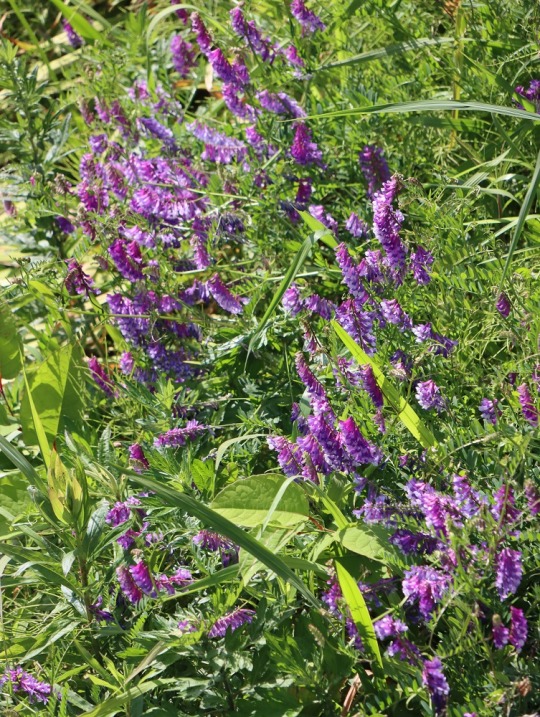
川べりにクサフジが咲いている(4月28日)
#Vicia cracca#tufted vetch#cow vetch#bird vetch#blue vetch#boreal vetch#wyka ptasia#flowers#kwiaty#japan
4 notes
·
View notes
Text



Behind The Cabin, 2022
#my photography#photography#my photos#flowers#flower photography#fungi#mushrooms#mushroom photography#photoset#nature#nature photoset#nature photography#cow vetch#madge's
1 note
·
View note
Text

koiranputket, kissankellot, leinikit, hiirenvirnat
#transl: cow parsley. bluebell. buttercup. tufted vetch#photography#finland#photographers on tumblr#nature#summer#flowers#ainakin näin luulen! en mikään kasvi-ekspertti ole#ihanat eläimennimet näillä kasveilla:)
2K notes
·
View notes
Text
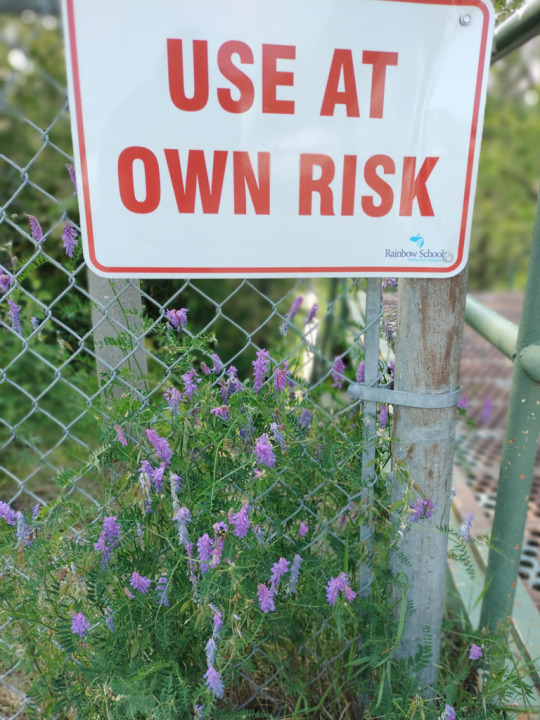
Still playing around with the camera settings on my phone when I go for walks (this was #64). Took a surprisingly nice photo of a sign and some tufted vetch (with bonus bumblebee) at the top of the many flights of stairs down to the old high school (now grade school) in the bottom of what was once a gravel pit. I like the depth of field the portrait mode gives, it's much more attractive than the trying-to-be-sharp-everywhere of the regular photo mode.
Still failing to get the hang of the macro setting, even when I'm the right distance I get poor results. This was the best I managed out of multiple attempts along my route:

#MsB goes for a walk#Bumblebee#Tufted Vetch#I once won a scrabble game by spelling vetch iirc#My BIL didn't believe it was a real word and challenged#Which surprised me because he was a life-long gardener#And you see (introduced) vetch growing wild all over the place#It's a good weed#Fixes nitrogen in the soil#Native bees like it#Not toxic to animals#Cows love it#It's in the pea family#I called it 'cannonball plant' growing up because of the round black seeds
7 notes
·
View notes
Text
A Recipe for Daropaka and a Korithian Meal

Hello everyone! (More than) A few days ago I said that, as a way to celebrate reaching 200 followers that I would make one of the dishes from the setting of my WIP. I did something similar for 100 followers which you can see here. This time around I put up a poll to see what dish you all would like to see based on the favorite dishes of my OCs. You voted for Otilia's favorite food, a cheesecake (Daropaka) from the land of Korithia.
However because I felt a bit bad about how long it took me to get to this and because I needed to make something for dinner anyway, I prepared an entire Korithian meal, specifically the last dinner Otilia ate before she left her homeland.
I will give a short description and some history for each component of the meal and will also provide recipes. These recipes come specifically from the Korithian city-state of Kalmanati.
BIG POST ALERT

The diet of Korithians is highly reliant on cereals, grapes, and olives. Barley is the most commonly consumed cereal and is used in the bread of most commoners. However, Kalmanati is famed for the quality of its wheat, and particularly among the wealthy, wheat is the cereal grain of choice. Legumes (Lentils, peas, vetch, beans, etc), vegetables (Cabbage, carrots, lettuce, seaweeds, artichokes, asparagus, onions, garlic, cucumber, beets, parsnips, etc.) and fruits/nuts (pomegranate, almond, fig, pear, plum, apple, dates, chestnuts, beechnuts, walnuts, rilogabo(Kishite regalu "Sunfruit"), bokigabo (Kishite botagalu "Northern fruit), etc.) also make up a significant portion of the Korithian diet, with meat (Cattle, lamb, pig, goat, goose, duck, horned-rabbit, game) and fish typically filling a relatively minor role except for in the diets of wealthy individuals (like Otilia).
Vinegar, oil, and garlic appear in almost all Korithian dishes and are an essential aspect of the Korithian palate.
Recipes below the cut!
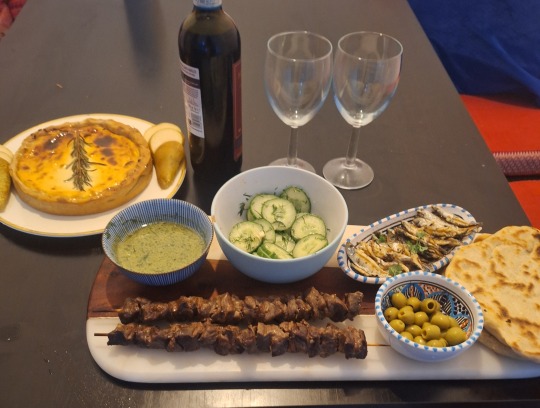
The components of the meal are as follows:
Daropaka: (Korithian: Daro = cheese, paka = cake)
Karunbarono: (Korithian: Karun = meat, baro = fire (barono = roasted) )
Pasrosi Diki: (Korithian: Pasrosi = fish(es), Diki = small)
Psampisa : (Korithian: Psamsa = bread, episa = flat)
Akuraros : (Korithian: Akuraros = cucumber)
Ewisasi : (Korithian: Ewisasi = olives)
Funemikiwados: (Korithian: Funemiki = hill (mountain diminutive), wados = oil/sauce)
Wumos: (Korithian: Wumos = wine)
Daropaka aka Awaxpaka aka Korithian Cheesecake
Daropaka is a popular dessert in Korithia, however its origins predate Korithia by several thousand years.
The dish originates from a race of forestfolk living on the Minosa, known as the Awaxi. The Awaxi were a tall and powerful race, some rivaling even demigods in size. Aside from their size the Awaxi were also easily identifiable by the third eye which sat on their forehead and the porcupine like quills which grew from their shoulders, sometimes called the Awaxi mantle.
The Awaxi were a primarily pastoralist civilization, living in small semi-temporary communities where they raised cattle and goats. They are credited with inventing cheese.
The first humans that the Awaxi came into contact with were the Arkodians. The Arkodians introduced the Awaxi to metallurgy, and in exchange the Arkodians were given knowledge of the cheesemaking process. This early form of cheese was called darawa (Korithian: Daro) and was typically made from cow's milk and vinegar, the resulting cheese being soft and crumbly, similar to a ricotta.
Unfortunately peace would not last. The Awaxi settled disagreements and debates often through duels, rather than through war. While quite skilled duelists, their culture had no reference for strategy in battle and lacked the proper skills to fend off the organized assault from imperialistic Arkodians. The Awaxi were eventually driven to extinction, though they still appear as monsters in Korithian myth.
The Arkodians themselves would later fall, destroyed by the Kishites, however many of their recipes, including their recipe for cheesecake, would be passed down to their descendants, the Korithians.
Recipe
(Note that Korithia has no distinct set of measurements nor are recipes recorded. Recipes are typically passed down orally and differ greatly between regions and even families. Adjust ingredients to one's own liking) (Also note that this is not like a modern cheesecake, as it utilizes a ricotta like cheese the texture will not be as smooth and it doesn't use eggs as chickens have not yet been introduced to Korithia)
The Cheese
1/2 Gallon of Whole Cow or Goats Milk
1 Pinch of Sea Salt
2 Bay leaves
2 Tablespoons of White Vinegar
1 Large Ripe Pear
6 Tablespoons Honey
2 Tablespoons White Wheat Flour
1 Tablespoon Rilogabo Juice (substitute 1:1 Orange and Lemon juice)
The Crust
1 Cup White Wheat flour
Water, Warm
1 Pinch of Sea salt
The Topping
1 Sprig Rosemary
3 tablespoon honey
2 tablespoon rilogabo juice (see above)
1 Large pear (optional)
Fill a pot with milk. Stir in salt and add bay leaves. Heat over medium heat until milk registers around 190 F, do not allow to boil. Look for slight foaming on the surface, when the temperature has been reached, remove the bay leaves and add vinegar, the curds will begin to form immediately, stir to fully incorporate vinegar without breaking curds. Stop.
Take the pot off of the heat and cover, allow it to sit for 15 minutes.
Using cheesecloth, a fine mesh strainer or both, separate the curds from the whey. Allow the curds to cool and drain off excess liquid.
Preheat the oven to 410 F or 210 C. Grease the bottom and sides of an 8 inch cake pan with olive oil.
While cheese is draining, make the crust. Knead the white wheat flour with a pinch of salt and warm water for about 15-20 minutes, until obtaining a smooth consistency. Roll a thin circular sheet larger than the cake pan. Lay the dough inside, trim off any dough which hangs over the edge of the pan.
Skin and seed 1 large pear, using either a mortar and pestle or a food processor, break the pear down into a paste or puree, there should be no large visible chunks.
Combine drained cheese, 6 tbsp honey, pear puree, flour, and rilogabo juice. Using a food processor or other implement combine ingredients until a smooth texture is achieved. Taste and add honey accordingly
Pour the mixture into the pan, careful not to exceed the height of the crust. Top with a sprig of rosemary and place into the oven.
Cook for 25-30 minutes or until the filling has set and the surface is golden.
Make the topping by combining 3 tablespoons of honey and the remaining rilogabo juice.
Remove cake from the oven and pour the topping over the surface. Allow the cake to cool
Serve warm, cold, or room temperature with fresh fruit.
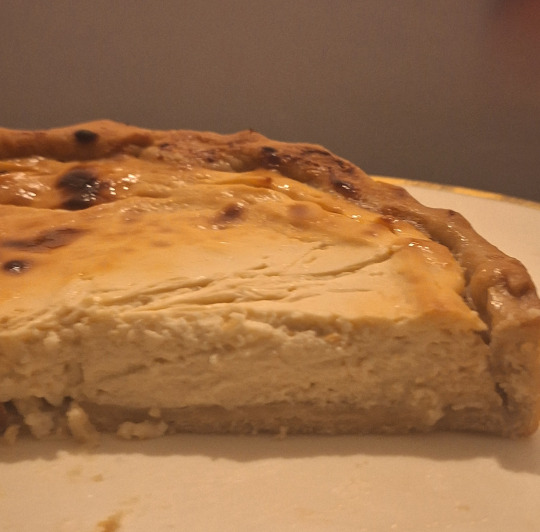
Karunbarono aka Roasted Meat

Cooking meat on skewers is a staple of Korithian cuisine, so much so that in certain regions the metal skewers or kartorosi, can be used as a form of currency. Meat is typically cooked over an open fire or on portable terracotta grills, though it is not unheard of to use a large beehive shaped oven or baros. The majority of the meat eaten by the lower classes comes in the form of small game such as rabbit or sausages made from the scraps of pork, beef, mutton, poultry, and even seafood left after the processing of more high-class cuts. The chicken has not yet been properly introduced to the islands, though some descendants of pre-Calamity chickens do exist, though they in most cases have drastically changed because of wild magic. Animals are rarely eaten young, lambs for example are almost never eaten as their potential for producing wool is too valuable. Most animals are allowed to age well past adulthood, except for in special circumstances. The practice of cooking meat in this style is prehistoric stretching back far before Korithia or Arkodai. What is newer however is the practice or marinading the meat before cooking it, this is a Korithian and later Kishite innovation.
Recipe
1 lb Mutton (meat used in this recipe), beef, lamb, venison, or horned-rabbit meat (in order to achieve this it is suggested to use wild hare meat in combination with pork fatback) chopped into bite sized pieces
4 Tablespoons Plain Greek Yogurt
4 Tablespoons Dry Red wine (Any dry red will work, for this recipe I used a Montepulciano d'abruzzo but an Agiorgitiko would work perfectly for this)
3 Tablespoons Olive Oil
4 Cloves of Garlic roughly chopped
1 Small onion roughly chopped
1 sprig fresh thyme
1 sprig fresh rosemary
1 tsp sea salt
1 tsp black pepper
1/2 tsp ground cumin
Gather and measure ingredients
Combine everything into a large bowl and stir, making sure that all pieces of meat are covered in the marinade.
Cover and allow meat to sit, preferably in the fridge for 2 hours or up to overnight.
Well the meat is marinating, if using wooden or bamboo skewers, soak in water for at least one hour to prevent burning.
Preheat the oven to 400 F or roughly 205 C. Or if cooking an open fire, allow an even coal bed to form.
Remove meat from the fridge, clean off excess marinade including any chunks of garlic or onion
Place meat tightly onto the skewers making sure that each piece is secure and will not fall off.
Brush each skewer with olive oil and additional salt and pepper to taste, optionally add a drizzle of red wine vinegar.
Place on a grate either in the oven with a pan below it to catch drippings or else over the fire. Allow to cook for 10-20 minutes depending on how well you want your meat cooked (less if using an open fire) Check every five minutes, flipping the meat after each check.
Remove from the oven and serve immediately.
Pasrosi Diki aka Little Fishes

Despite living by the sea, fish makes up a surprisingly small part of most Korithians' diet. The most valuable fish typically live far away from shore, where storms and sea monsters are a serious threat to ships. Much of the fish that is eaten are from smaller shallow water species, freshwater species, or shellfish. Tuna, swordfish, sturgeon, and ray are considered delicacies, typically reserved for the wealthy. Marine mammals such as porpoise are eaten on rare occasions, typically for ceremonial events. Pike, catfish, eel, sprats, sardines, mullet, squid, octopus, oysters, clams, and crabs are all consumed by the poorer classes. Sprats and sardines are by far the most well represented fish in the Korithian diet, typically fried or salted, or even ground and used in sauces. This particular recipe makes use of sprats. Unlike their neighbors in Baalkes and Ikopesh, Korithians rarely eat their fish raw with the exception of oysters.
Recipe
(Note that unlike modern recipes using whitebait, these are not breaded or battered as this particular cooking art has not yet been adopted in Korithia, though it is in its infancy in parts of Kishetal)
10-15 Sprats (other small fish or "whitebait" can also be used)
2 quarts of olive oil (not extra virgin)
Sea salt to taste
Black Pepper to Taste
Red Wine Vinegar to taste
Gather ingredients
Inspect fish, look for fish with clear eyes and with an inoffensive smell, avoid overly smelly or damaged fish.
Pour olive oil into a cast iron skillet or other high sided cooking vessel and heat to approximately 350 F or 177 C.
Fry the fish in batches of 5, stirring regularly to keep them from sticking. Cook for 2-4 minutes until the fish have started to crisp. Be careful, some fish may pop and spit.
Remove fish from the oil and allow them to drain.
Season fish with salt, pepper, and vinegar and serve.
Psampisa aka Flatbread
There are many varieties of bread eaten in Korithia and grain products make up anywhere from 50 to 80 percent of an average individuals diet. This particular variety of bread is most popular in the southern and eastern portions of Korithia, whereas a fluffier yeasted loaves are more commonly eaten in the west and north. This recipe is specifically made with wheat but similar breads can also be made with barley or with mixtures. If you do not want to make this bread yourself it can be substituted with most pita breads. Bread is served with every meal and some meals may feature multiple varieties of bread.
(Note for this recipe I only had self-raising flour at hand which gives a slightly puffier bread, if this is what you want add roughly 3 tsps baking powder)
Recipe
2 1/2 cups white wheat flour plus more for surface
1 1/2 teaspoons sea salt
1 cup whole fat greek yogurt
Olive oil for cooking
In a large bowl, mix together the flour, salt and baking powder. Add the yogurt and combine using a wooden spoon or hands until well incorporated
Transfer the dough to a lightly floured surface and knead by hand for 5 minutes until the dough feels smooth.
Cover the dough and allow to sit for approximately 20 minutes
Separate dough into desired number of flatbreads.
Add flour to each dough ball with your hands and then use a rolling pin to flatten out the dough on a lightly floured surface. Size is up to taste.
Heat a pan on medium high heat. Add the olive oil and cook the flatbreads one at a time for about 2-4 minutes, depending on thickness, per side until the bread is puffed and parts of it has become golden brown.
Akuraros aka Cucumber (Salad)

While the cucumber has become a relatively popular crop within Korithian agriculture it is not native and was all but unknown to their Arkodian predecessors. Cucumbers, which actually originated in Sinria and Ukar, were introduced by Kishite invaders during the Arko-Kishite war and were subsequently adopted by the survivors of that conflict. Cucumbers are associated with health and in particular with fertility. Cucumbers are typically eaten raw or pickled. They may be used in salads or even in drinks, ground into medicinal juices. Cucumbers are additionally believed to ward off disease carrying spirits and may be hung outside of the doors of sick individuals to ward off evil entities. Cucumbers are also fed to learning sages, as they are believed to strengthen the resolve and spirit. A potion consisting of the magical herbs wumopalo and lisapalo, wine, and cucumber juice has historically been used to temporarily induce in non-sages the ability to see spirits. Dill is additionally believed to produce positive effects, thought to ward of diseases of the stomach and cancers. Dill is often used in potions which may effect the physical nature of an individual, these potions are rarely used as their effects are most often permanent to some extent.
This particular cucumber salad recipe is a favorite in the region around Kalmanati, Bokith.
Recipe
1 large cucumber cleaned
2 cloves garlic roughly chopped
2 tablespoons fresh dill chopped
1/3 cup red wine vinegar
1/4 cup extra virgin olive oil
Salt to taste
Pepper to taste
Cumin to taste
Cut cucumber into thin slices (the actual width will vary dependent on taste)
Combine cucumber and all other ingredients in a non-reactive container and mix.
Cover and store the salad for at least 30 minutes and up to 12 hours.
Serve cold
Ewisasi aka Olives

The Ewasi or olive is in many ways the center of Korithian cuisine, as it is also in Baalkes and Knosh. Olive oil is used regularly and the olive fruit is consumed at all meals of the day including dessert. Olives are cured via the use of water, vinegar, brines, or dry salt in order to remove their innate bitterness. There are hundreds of varieties of olive in Korithia alone, their taste dependent on when they are harvested, how they are cured, the particular cultivar, and even the soil in which they are grown. Kalmanati is best known for two varities of olive, the kalmi, which is red fleshed and meaty, typically cured in red wine vinegar, and the prasiki, a small green olive which is firm and slightly nutty in flavor.
Recipe
Take your favorite olives, put them in a bowl. Optionally add vinegar and herbs
Funemikiwados aka Hill Sauce
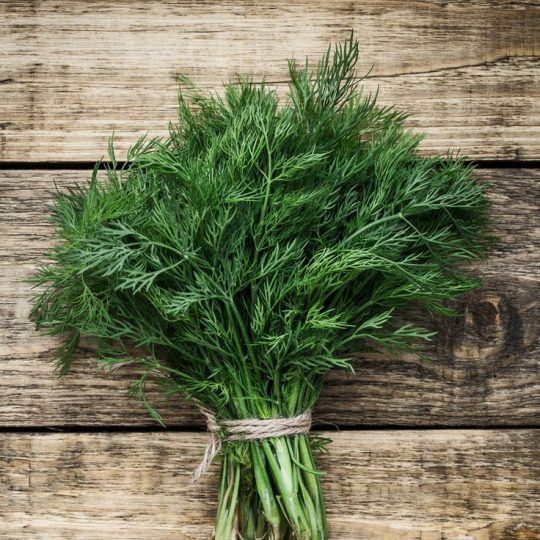
Hill sauce is the condiment of choice for most Korithian households and the exact nature of the sauce will vary greatly from region to region. In the north it is most often composed of pine nuts, olive oil, onion, vinegar, salt, and garlic. In the south the sauce is typically far more marine in nature, composed of seaweed, fish, garlic, olive oil, and vinegar. In all cases the ingredients are combined and mashed or ground to produce a pourable/dipable sauce. The sauce itself originates from the center of Korithia around the city of Bokakolis. The sauce was originally used by shepherds to flavor dried meats which may otherwise be dry or flavorless. Its name derives from the ingredients used within these early versions of the sauce, many of which were herbs plucked from the hillside while the shepherds tended to their flocks. The Kalmanatian version of the sauce is similar to this original herb based variety however it adds salt-cured fish and tisparos (Tisi - tickle, paros- seed) , another Kishite import (there it is called lisiki). This sauce is often used with practically any savory food, poured on meat, fish, vegetables, and bread. Often a house may be judged by the quality of their funemikiwados. Among the Kalmanatians there is two varieties of the sauce, a fresh version (the one described here) and another which is typically made with dried herbs and has additional vinegar added to act as a sort of preservative.
Recipe
1/2 cup extra virgin olive oil
1/3 cup red wine vinegar
2 tbsps rilogabo juice (1:1 orange and lemon)
2 anchovies (or other small salt-cured fish)
1/4 cup fresh chopped dill
1/6 cup fresh chopped parsley
1/8 cup fresh chopped thyme
6-10 leaves of fresh chopped rosemary
2-3 leaves fresh basil
2 cloves of garlic
Black pepper to taste
Ground tisparos to taste (Substitue ground sichuan pepper)
Gather the ingredients.
Combine and grind anchovies, garlic, and herbs into a fine paste, using a mortar and pestle or with a food processor.
Combine the herb paste ialong with the rest of the other ingredients and mix until completely incorporated.
Allow to sit at least 30 minutes, allowing for flavors to develop and properly incorporate with each other.
Serve with meat or fish
Wumos aka Wine

Wine in Korithia predates both the Korithians and the Arkodians, and had already been developed by several cultures on the islands including the Awaxi mentioned earlier. Wine is one of the most commonly consumed beverages, only surpassed by water, and slightly more common than psamarla, a Korithian version of unfiltered beer. Wine has many social, religious, and economic uses and is essential in the trade of the plantbrew, making up the base of many kinds of potion. There are many varieties of wine, with some being viewed as better or worse than others. Red wine is typically preferred for later in the day as it is believed that it helps to induce sleep while white wine is preferred for the morning and afternoon. Wine is typically watered down at a ratio of 2 parts water to 1 part wine, this may be either with plain or salted water. Unwatered wine is saved for special occasions and certain religious ceremonies in which intoxication is the goal. Wine may be sweetened with honey, figs, or various fruit juices. Herbs and spices such as black pepper, tisparos, coriander, saffron, thyme, and even cannabis and opium and various magical herbs may be added to change the flavor of the wine and to promote other effects.
Recipe
Pick a wine that you like and put it in a glass or cup. You can water it down if you would like but I didn't because I am not Korithian and this was a special occasion.
I finally got this post done! If you decided to read through this whole thing, thank you! Let me know if you try any of these, most of these amounts are ultimately a matter of taste, you can change things and experiment if you want.
Now we'll see if I get to 300 followers and we'll do this all over again with the food from another part of the Green Sea.
Thank you all again for following me, I've really enjoyed sharing my WIP with y'all!
@patternwelded-quill , @skyderman , @flaneurarbiter , @jclibanwrites , @alnaperera, @rhokisb, @blackblooms , @lord-nichron , @kosmic-kore , @friendlyshaped , @axl-ul , @talesfromtheunknowable , @wylanzahn , @dyrewrites , @foragedbonesblog , @kaylinalexanderbooks , @mk-writes-stuff , @roach-pizza
#fantasy food#writeblr#writing#worldbuilding#fantasy#testamentsofthegreensea#fantasy writing#world building#creative writing#story writing#200 followers#thank you guys so much!#fantasy world
80 notes
·
View notes
Text
I want you to imagine a meadow. In the golden sunlight of late summer. The flowers are fragrant. Some of them are almost waist high. Meadowsweet, spearwort, yarrow, clover. The fringed leaves of silverweed shimmer as they dance beneath your feet. Elsewhere, the grass is dotted with flowers you have to crouch to see. Forget-me-nots, stitchworts, vetches. A dynamic living carpet curls around your boots.
The meadow goes on for miles. There are hedges and stands of trees. These woods are heavy with blackberries and elderberries, the promise of autumn on its way. And at the end of the meadow is a glittering shore. A lake sparkles as it laps against the meadow, creating the perfect home for the golden goblet flowers of marsh marigold. The sighing sound of the water wraps you up in a gentle sense of peace.
And the animals! As you walk, curious cows come up to say hello. A pair of horses follow you for a while. You stroke one of them on its velvet soft nose. It leans into the weight of your careful hand.
Finally, I want you to imagine that somewhere, deep in this meadow of dreams - among the flowers and the brambles and the animals who seem like they might like to follow you home - you lost your keys.
That was my afternoon.
#I....did not find them!#it was surreal to be so stressed amid so much beauty.#I paid a lovely man 450€ to hack my car while a kind farmer offered me tea and food and new socks and also his van#and now i'm home and showered and I have an alcoholic beverage and I might still get 7h sleep. Happy ending.#Dont @ me about describing grazing land as a meadow. Meadow evokes the sense of the place better#It hadn't been topped in TWO YEARS#Hm. Would love to hear what ppl think topping means in this context. Stiofan don't respond that's cheating#Me Fein#eefa sells her labour
47 notes
·
View notes
Text
The collective farm, as we have seen in an earlier chapter, fits in admirably to the military organization; it already has its defense group, its labor battalions, its organization for caring for children and the weak. If the farm is in the immediate rear of the Red Army, its activities are those typified in the Ukrainian village “K.” Through its formerly quiet streets roll endless truckloads of fuel and ammunition bound for the front; in case of need, the collective farm’s machine shop offers minor repairs. Many of the farmers are now in the Army and are replaced by women. The remainder have rapidly harvested the crops and threshed more than half of them, taking them to the railroad for transport to the rear. During a brief lull on the front, fifty Red Army men came to assist in the reaping and threshing; they accounted for fifty acres of peas and forty acres of wheat before they had to go back to fight. Some forty of the farmers are working full time repairing roads for the Army. Gangs of girls and women, under the direction of Army sappers, dig trenches and camouflage them with foliage. This organized dovetailing of the activities of Army and people continues without a break if the Army is forced to retreat. Some of the civilians retreat with it as labor gangs. They destroy the village completely before they go. A detailed account of this “total destruction” was given by a village designated only as “X.” When the Germans approached, a group of young people entered the granary, loaded nine trucks, and sent them to the railway station camouflaged under green boughs. Four tons of barley and vetch, which could not be removed, were burned. The tractors plowed down and uprooted the beets. The milkmaids drove the cows through the maturing wheat and rye; they were followed by eighty girls and women with sickles and scythes who chopped up what was left. The mechanics broke the fuel tank; the blacksmiths destroyed the harvesters and thresher. The broken machinery was thrown down a steep precipice. The people burned the pigsty, cowsheds, granary, beehives, and the new stable. The best horses were driven to the forest for the use of guerrillas. Fourteen fattened pigs were slaughtered for the Red Army commissary, the rest were driven to the railroad and shipped to the rear. The wells were filled with earth, and the water from the pond was let out by breaking the dike. Even the green apples were picked by the gardener with the remark, “They shall not ripen for the robbers." If possible, the entire population of the village scatters in an organized manner. If there is time, the children and weaker adults are evacuated by train to the interior of the country; a fortnight after the war began, trains of evacuated people began arriving in Sverdlovsk and other towns of the Urals, where jobs or accommodations in rest homes were at once available for the newcomers – a fate quite different from that which befell the refugees of Western Europe. The most able-bodied of the population go into hiding in the woods as a guerrilla organization that harries the enemy’s rear under direct orders from the Red Army and often in co-ordination with the fighting at the front.
The Soviets Expected It, Anna Louise Strong, 1941
16 notes
·
View notes
Text
Authentic Irish Foods for Bealtaine




🐖 Pig Meats (and blood puddings)
- Irish traditon for pig slaughter states that its only appropriate to slaughter pigs in months which have the letter 'r' (this excludes May, June, July and August; presumably because these warm months would cause spoilage)
- Irish tradition also states that St. Patrick's day is a day which pigs would be slaughtered (presumably in higher numbers than usual) so its safe to assume that Irish peoples would want to finish the meats off around Bealtaine to prevent spoilage
🦌 Deer Meat
🐝🍯 Honey
🐄🥛Cow Dairy products
🐟 River fish (like perch)
🌿Native culinary plants that grow in Ireland this time of year
Dandelions
Wild garlic
Primrose
Nettles
Vetch
Elderflower
Sorrel
Sea lettuce
Ground Ivy
My Kofi
#irish#irish food#food#Bealtaine#beltaine#beltane#foraging#food cycles#blackcrowing#irish paganism#paganism#irish polytheism#celtic paganism#celtic polytheism#pagan#celtic#irish reconstructionist#irish reconstructionism
25 notes
·
View notes
Photo



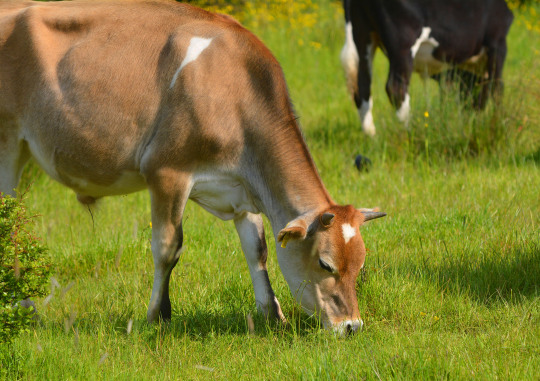
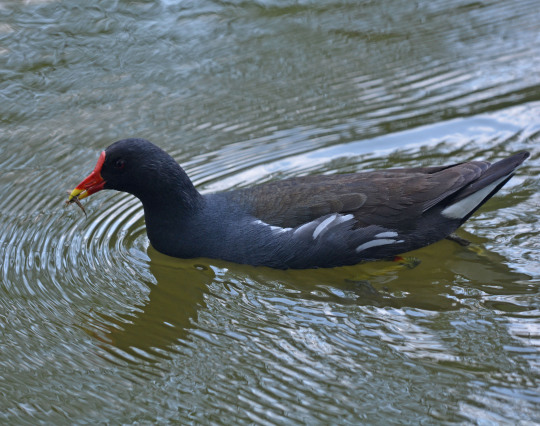

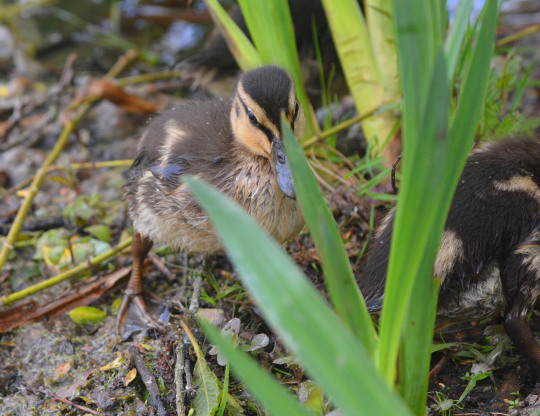

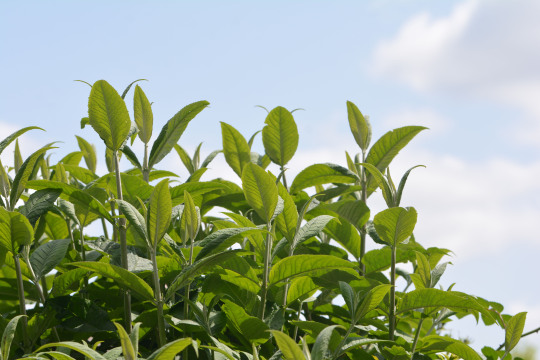
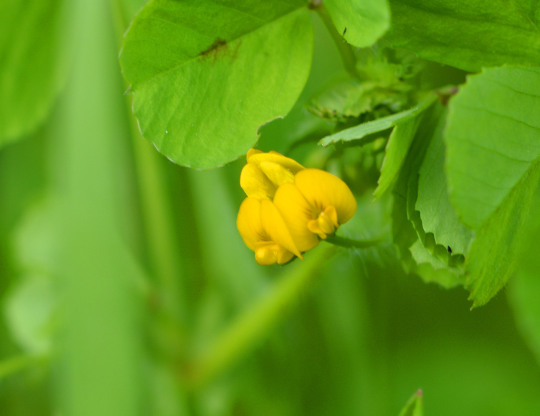
16th May 2023-Lakeside and home
Pictures taken in this set are of: 1. Pretty flowers I believe blue flax in the flower bed area on the way to Lakeside at lunch time. 2 and 6. Beautiful views at Lakeside at lunch time and this evening on lovely walks. 3. A stunning Whitethroat which sang stupendously atop a greening alder by the lake seen from the northern path. I’m having probably my best spring for them here having seen them many times, still a pretty notable bird for here for me and it was nice to get a record shot of one to mark this. 4. Cattle at Lakeside tonight. 5. Moorhen at Lakeside. 7. Mallard ducklings which I enjoyed lovely intimate views of tonight. 8. Tree out the back. 9. The shining buddleia bush looking nice out the front. 10. A nice flower at Lakeside at lunch time I believe spotted medick.
I was gripped to see a pair of Red Kites in the air on the way to Lakeside in the area out the front which was quite notable and from Lakeside along the northern path later on in my lunch time walk, glorious raptors to see in a mostly blue sky these were such precious views. A nice view of a Jay at lunch time and the Great Crested Grebes tonight were other of my favourite birds seen well today and I enjoyed watching a Kestrel that appeared to have prey in its talons tonight. Swift, Black-headed Gull, Herring Gull possibly mobbing the Red Kites, Jackdaws seen well, Wren and Robin were other Lakeside bird highlights with great views of Holly Blue, Small Heath, Speckled Wood and Green-veined White again in the way of butterflies. It was a delight to see some Bishop’s Mitre shieldbugs mating in the grass of the eastern meadow not something I’d seen before as well as little beetle and micro moths. Buttercups, oxeye daisy, vetch, mouse-ear chickweed, cuckooflower hanging on, yellow iris, sorrel, red deadnettle, cow parsley, and my first wood avens at Lakeside this year and first dog rose of the year were other flower highlights with poppy, forget-me-not and cornflower seen well at the flower bed on the way. I saw Woodpigeon, Collared Dove, Goldfinch and House Sparrow well from home again.
#photography#goldfinch#poppy#red kite#red kites#swift#whitethroat#kestrel#great crested grebe#cuckooflower#cow parsley#bishop's mitre shieldbug#birdwatching#england#lakeside#lakeside country park#outdoors#lunch time#evening#walks#walking#birds#holly blue#speckled wood#green-veined white#small heath#uk#jay#happy#meadows
15 notes
·
View notes
Photo
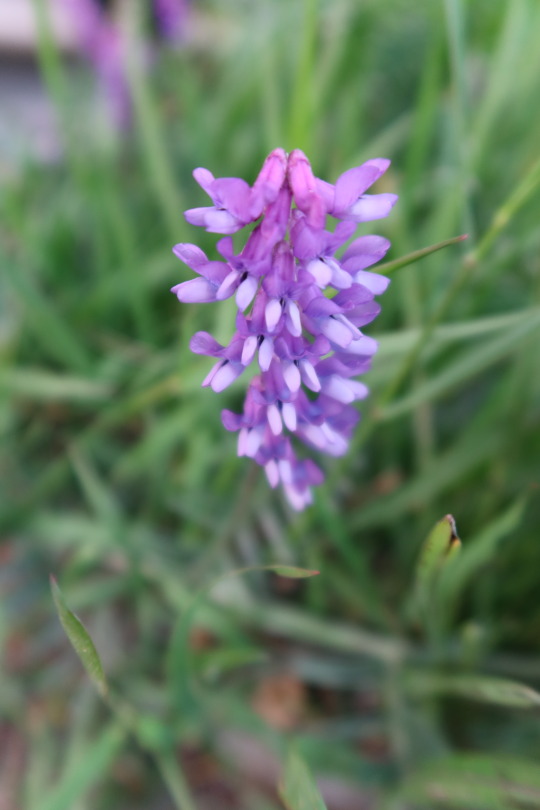
Vicia cracca — cow vetch a.k.a. tufted vetch
8 notes
·
View notes
Text

クサフジ(4月28日) #路傍の植物園
Wyka ptasia (Vicia cracca)
tufted vetch, cow vetch, bird vetch, blue vetch, boreal vetch (Vicia cracca)
#Vicia cracca#Wyka ptasia#tufted vetch#cow vetch#bird vetch#blue vetch#boreal vetch#flowers#kwiaty#japan#花#クサフジ#路傍の植物園
1 note
·
View note
Text
“White Morning” — W.S. Merwin
On nights toward the end of summer and age of mist has gathered in the oaks the box thickets the straggling eglantines it has moved like a hand unable to believe the face it touches over the velvet of wild thyme and the vetches sinking with the weight of dew it has found its way without sight into the hoofprints of cows the dark nests long empty the bark hanging along the narrow halls among stones and has held it all in a cloud unseen the whole night as in a mind where I came when it was turning white and I was holding a thin wet branch wrapped in lichens because all I had thought I knew had to be passed from branch to branch through the empty sky and whatever I reached then and could recognize moved toward me out of the cloud and was still the sky where I went on looking until I was standing on the wide wall along the lane to the hazel grove where we went one day to cut handles that would last the crows were calling around me to white air I could hear their wings dripping and hear small birds with lights breaking in their tongues the cold soaked through me I was able after that morning to believe stories that once would have been closed to me I saw a carriage go under the oaks there in the full day and vanish I watched animals there I sat with friends in the shade they have all disappeared most of the stories have to do with vanishing
#endings#only connect#friendship#nostalgia#longing#growing up#quote#w.s. merwin#white morning#poetry#poem#nature
2 notes
·
View notes
Text

A couple of weeks ago, we discussed the different methods of crop irrigation that farmers use and how climate change is affecting the volume of water needed to keep fields hydrated and healthy here in the northeast. Managing water use wisely by installing efficient irrigation systems is just one of many steps that farms can take to reduce their impact on the local ecology while increasing their profitability and productivity. This week, we’ll touch on the importance of protecting and improving soil health to the future of sustainable farming. Building healthy soil and preventing erosion Sustainable agriculture is often used interchangeably with the term ‘regenerative agriculture’ because of the focus on restoring degraded farmland back to its former vitality and biodiversity. Beginning in the early 1900s, traditional farming techniques underwent a rapid transformation as mechanization replaced animal and human labor. As a result of these changes, the use of artificial fertilizers and pesticides was introduced, farms grew larger, yields increased and free-range, pastured animals were confined to smaller areas or moved into feedlots. During his youth in the 1950s, my father worked as a part-time laborer on a small farm in the north of England where he witnessed firsthand many of these changes occurring in real-time. The farm horse named Kit that he had grown fond of and spoiled with carrots and apples was replaced by a Ferguson tractor, while ancient hedgerows filled with blackberry briars and bountiful plum and damson trees were removed to make it easier for the new tractor to plow the land. He recalls forking out chicken and cow manure from the back of the horse-drawn cart to naturally fertilize the fields and hand-harvesting potatoes amongst other “backbreaking work” that is now performed by machines instead of farmhands. While all this modernization has spiked farm efficiency and production, it has often come at the expense of the health of the farmland, livestock and environment. Regenerative agriculture aims to restore the land back to its former fertility by reintroducing many of the traditional farming techniques of my father’s youth. At its core, it centers on promoting and bolstering soil health as fundamental to a farm’s ability to thrive and prosper well into the future by adopting a range of methods including the following:
Crop rotation and diversity: Rather than planting the same crop in the same field year after year, which eventually depletes the soil of certain nutrients and can lead to pest infestations, farmers introduce a different type of crop each year or at multiyear intervals. They can also include intercropping which involves growing a mixture of crops in the same area.
Cover crops and perennials: Cover crops such as clover, rye, buckwheat, mustard and vetch are planted in fields during the off-season when the ground might otherwise be left bare. This helps protect and build soil health by replenishing nutrients and preventing erosion from extreme weather events that are becoming more frequent due to climate change. Perennial crops such as alfalfa and asparagus keep soil covered, suppress weed growth and maintain living roots in the ground year-round which hold soil in place and helps stabilize the areas in which they are planted.
No or limited use of chemicals: Crop rotation and planting cover crops will naturally reduce or eliminate the need for synthetic pesticides and fertilizers over time by protecting and boosting soil biology. Regenerative agriculture allows for the judicious use of chemicals only when needed, such as when restoring heavily depleted soil to its natural resilience.
Compost, animal and green manure: Farmers can increase the amount of organic matter in their soil and boost its fertility through the application of compost, animal manure and ‘green manuring’ their cover crops which entails plowing under the still-living, undecomposed plants into the ground where they slowly release fertilizing nutrients like nitrogen.
Reducing or eliminating tillage: Traditional plowing (aka tillage) prepares fields for planting and prevents weed growth by mechanically turning over the uppermost layer of soil. Unfortunately, plowing disrupts soil microbiology (bacteria, fungi and other organisms) which causes soil loss and releases carbon stored in the soil’s organic matter into the atmosphere as carbon dioxide, which we all know is a potent greenhouse gas. Alternatively, no-till or reduced-till methods involve inserting crop seeds directly into undisturbed soil, which reduces erosion and conserves soil health.
Agroforestry: Agroforestry refers to the practice of incorporating trees into farmland, such as the plum and damson trees my father remembers in the old hedgerows. By cultivating trees and shrubs on their property and mixing them into their operations, farmers can provide shade and shelter that protect crops, livestock, and water resources, while also leveraging additional income from fruit, syrup, nut, or timber yields. Agroforestry promotes biodiversity on a farm and trees are, of course, critical to slowing the effects of climate change. Plus, trees promote soil health by preventing erosion, fixing nitrogen and supporting the growth of fungi and other soil microbes.
Unlike large, industrial farms that grow monoculture crops and factory farmed animals, the small, local farms that partner with Down to Earth farmers markets have long embraced many of these sustainable agricultural practices. From composting to pasturing livestock to crop diversification, our farms understand the importance of soil health and are invested in protecting the local ecosystems and communities in which they operate, while producing a range of healthy, nutrient dense foods. It’s a win-win for everyone!
#downtoearthmkts#farmersmarket#eatlocal#shoplocal#buylocal#eatdowntoearth#regenerative agriculture#farmersmarkets#agroforestry#crop rotation#cover crop#crop diversification#localfood#no till
4 notes
·
View notes

